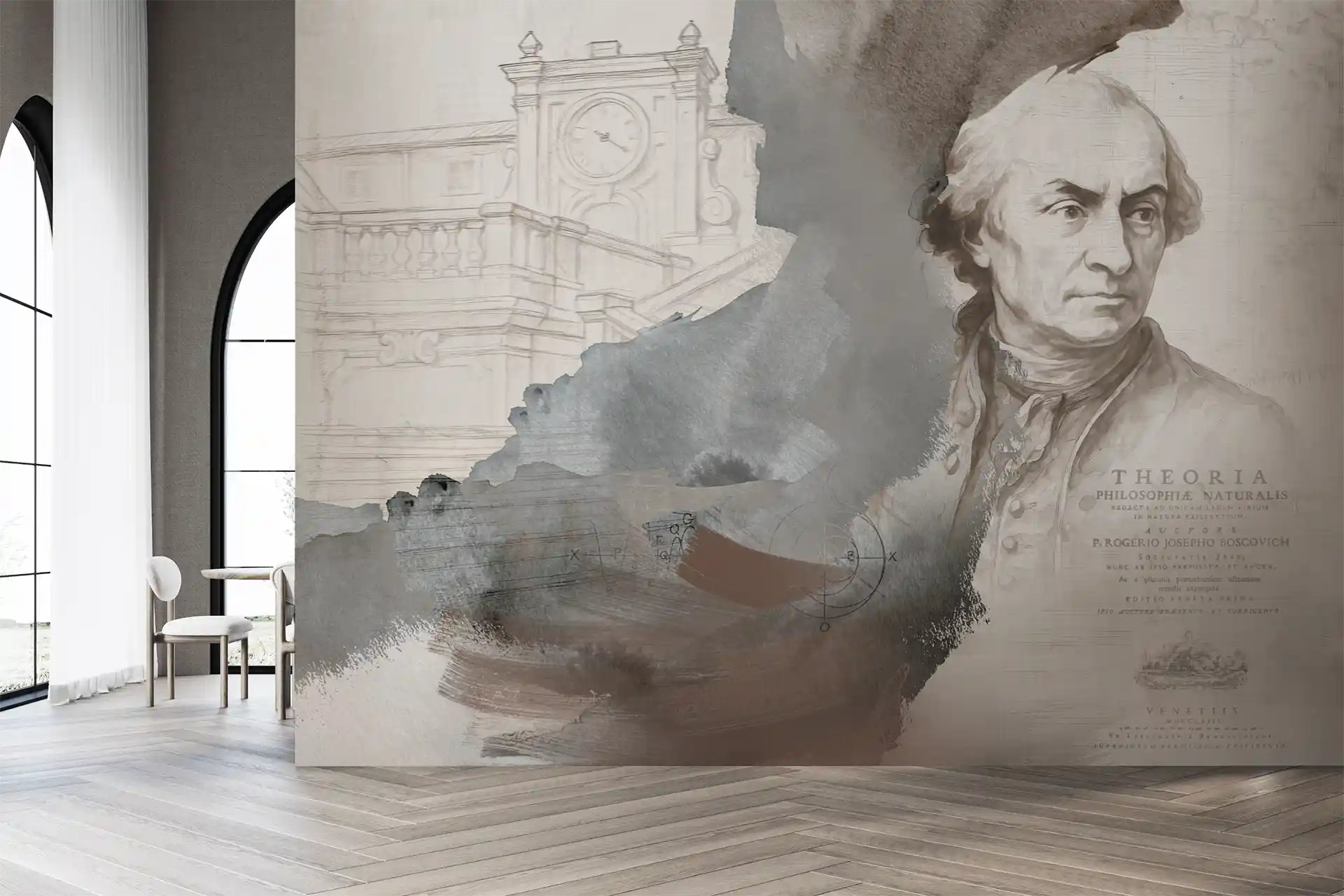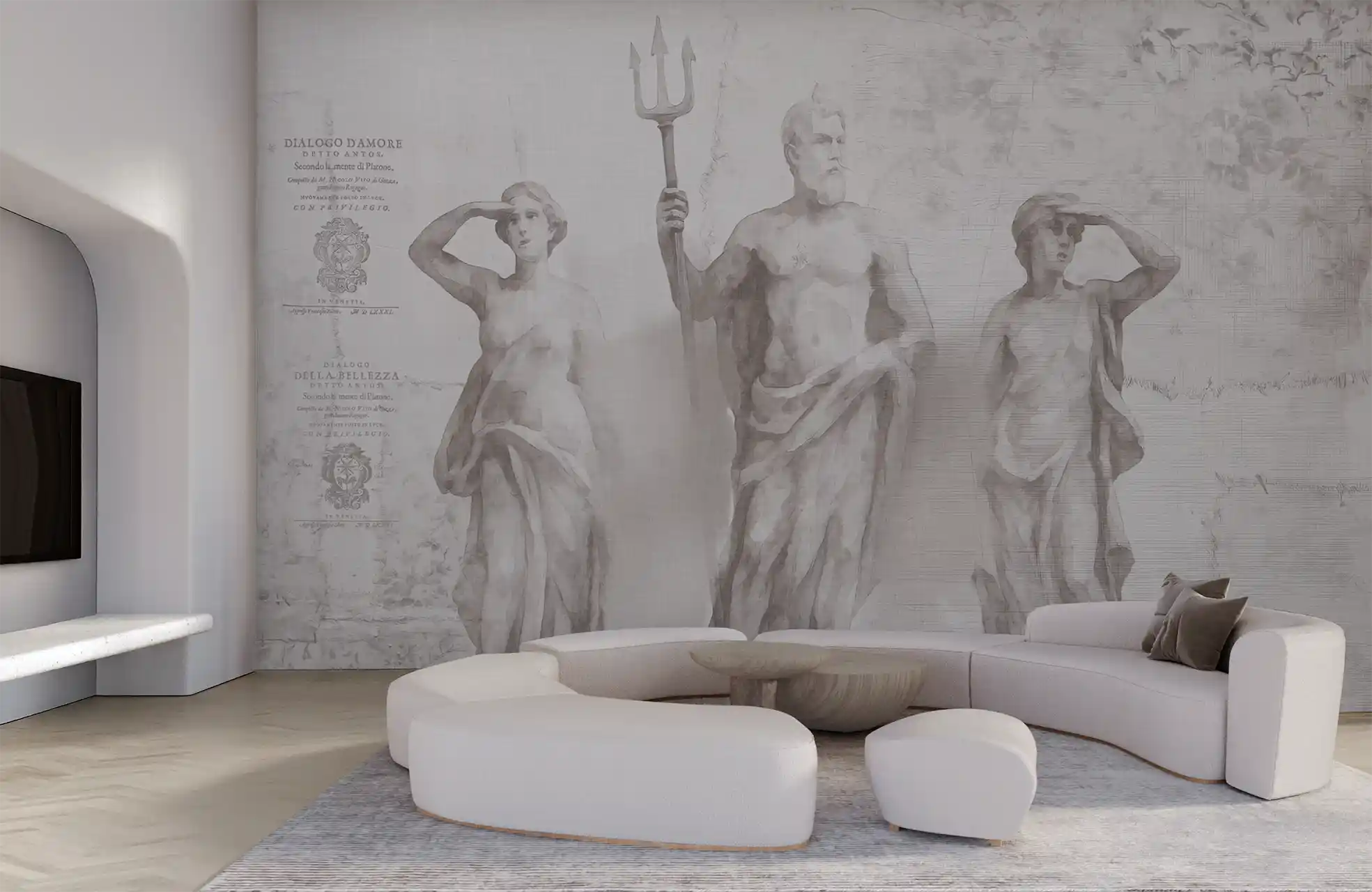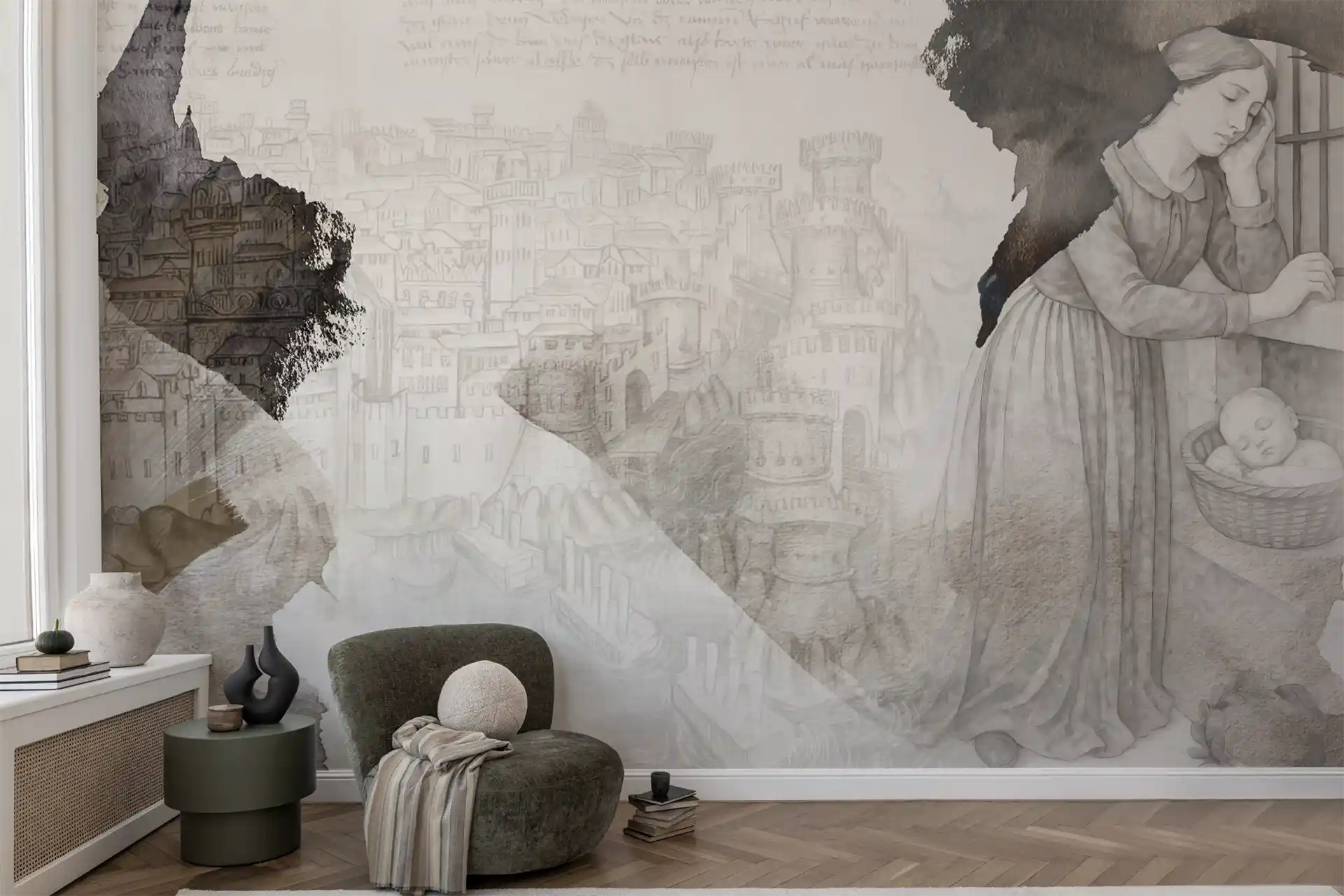Whenever Croatian wallpaper brand Studijo unveils a new collection, design lovers wait with a quiet thrill of anticipation, eager to discover how the atelier will surprise them next. Over the years, artist and founder Josipa Maras has spoiled audiences with collections that often set international trends. Yet her latest work, Ode to Dubrovnik, offers something entirely new: an intimate, reverent portrait of Croatian heritage translated into sweeping contemporary art.

Photo credit:
Studijo
From Archive to Atelier: History in Every Brushstroke
Dubrovnik has built its identity over centuries on three pillars, its people, its architecture, and the written records that preserved its story. These elements form the backbone of Ode to Dubrovnik, a limited-edition wallpaper collection defined not by scarcity, but by the singularity of its artistic vision.
The spark for the project came from a bespoke commission: a new luxury hotel nestled in Lapad Bay, just three kilometers from Dubrovnik’s medieval core and scheduled to open this September. For Maras, the creative journey felt like an archaeological dig, peeling back layers of history to find the city’s hidden pulse. She immersed herself in archives and museums, studying original documents, sketches, inscriptions, and photographs. From pencil sketches to carefully built compositions and fluid watercolor washes, every stage of creation embraced the tactile beauty of imperfection. Even the final digital process deliberately preserved those organic marks of the artist’s hand.
“When I was entrusted with this project, I knew it would change me—not only as a painter but as a person,” Maras recalls. “Dubrovnik isn’t a city you can touch lightly; it demands understanding. Early morning walks revealed its quiet soul in the faces of facades and the hush of old passageways. I read handwritten recipes from the 14th century, studied maps that once defined the Republic’s borders, and followed the traces of decisions that saved lives. My mission was to portray it beyond postcard beauty—to capture the rhythm of its past. Art, to me, is a journey for those who dare to be first.”
A City Told Through Heroes, Architecture, and Ancient Records
Each wallpaper in the collection is a carefully considered triptych: a central figure, an architectural motif, and a historical document that anchors the scene in time. Figures dominate the composition, architecture provides structure, and manuscripts whisper a quiet but essential backstory.
From afar, the designs radiate harmony; up close, they reveal a wealth of detail—handwritten notes, pigment grains, and the texture of aged paper. The city’s greats take center stage: poet Ivan Gundulić, scientist and philosopher Ruđer Bošković, Renaissance physician Amatus Lusitanus. Alongside them stand Dubrovnik’s unsung heroes: merchants trading beneath the Sponza arcades, sailors returning with treasures from distant ports, standard-bearers of St. Blaise, mothers leaving infants at the foundling door in search of safety.
Architecture becomes a narrative pillar: the Rector’s Palace, political heart of the Republic; Sponza Palace, once its commercial hub; the Church of St. Blaise, spiritual center; and the ingenious Onofrio Fountain, a 15th-century engineering marvel. Backgrounds hum with the city’s collective memory—statutes dating to 1272, Great Council decrees, recipes from the Franciscan monastery pharmacy, trade and maritime records, even documents abolishing slavery centuries before the rest of Europe.
“Initially I thought the greatest challenge would be execution,” Maras admits. “But soon I realized the key was finding harmony among three worlds—hero, architecture, and manuscript. Each carried its own power and language. Many sleepless nights passed as I searched for balance: where to place the figures, how to breathe life into stone, how to let the documents speak without overwhelming the whole. Slowly, everything aligned: the manuscripts settled into the background texture, the heroes emerged to the forefront, and the architecture rose as the supporting pillars. That was the moment the wall truly came alive.”
A First Impression of a Different History
At a time when digital tools can replicate almost any shape and intellectual property is often violated in the race for instant fame, Ode to Dubrovnik underscores the irreplaceable value of an original hand. No technology can reproduce the instant when an artist lets a drop of pigment run beyond an imagined line, or the quiet atmosphere of the archive where an idea slowly matures.
The collection took months to complete, from the earliest research notes to the final brushstroke. Each design combines hero, architectural motif, and historic document so that it captivates both from a distance and up close. Even when translated into a digital format, the tactile quality remains, every line carrying the intention of the artist’s gesture.
“I welcome new technology and feel honored when my work inspires others,” Maras says, “but true art always triumphs over imitation. What is born from your own feeling and intuition can never be copied. Art is not an algorithm. You can trace a line, but you can’t capture its purpose or the moment of choice that keeps a stroke perfectly imperfect. That imperfection is where truth lives. I never wanted to present Croatia’s great figures as museum relics, but as people, ideas, and symbols woven into the living fabric of the city. I set ancient documents into a breathing background and allowed the architecture to experience a renaissance that only the hand of this century can offer.”
Photo credit:
Studijo







.svg)








